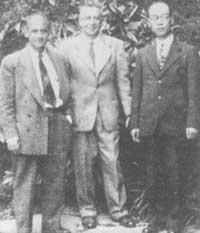How to make tritio
1989/06/01 Elhuyar Zientzia Iturria: Elhuyar aldizkaria
Tritio is the heavier isotope of hydrogen. In the core of the tritium there are two neutrons and a proton. Tritium is not found in nature, but is an unstable radioactive isotope (it has an average life of 12.3 years). Therefore, if tritio is desired (for example, for use in nuclear weapons) it must be manufactured artificially. How is it done?
The standard recipe for tritium is to add a neutron to the lithium core(6). In this way the nucleus is broken by forming a tritium atom and a helium atom (4). Another less effective method is to add a neutron to deuterium. In these two cases physics is simple, but technology is complex.
The advantage of lithium(6) is that it reacts faster than deuterium with neutrons.
Since the late 1940s, the US Energy section (DOE) has been using the Savannah River nuclear power plants in South Carolina to synthesize tritium. Reactors use uranium enriched as fuel. They work at 100C. Not to generate energy, but to obtain useful isotopes. To stop the neutrons generated by uranium, heavy water is used. Lithium more easily absorbs slow neutrons. The reactor uses uranium (235) of 80% to make the flow of neutrons emitted powerful enough to produce plutonium (239) in addition to tritium. Plutonium (239) is the most used isotope in atomic bombs.
For the formation of the tritium, lithium “itos” are used. The blend of lithium(6) and aluminum is introduced in watertight aluminium boxes. KutxaEspacio has been for six months a year within the reactor. The boxes leave the reactor and are heated to extract helium and tritio gaseous. This tritio is very pure and has no remains of other isotopes of hydrogen.
The tritio is stored in metal containers in the form of liquid or metallic hydride.

Gai honi buruzko eduki gehiago
Elhuyarrek garatutako teknologia




